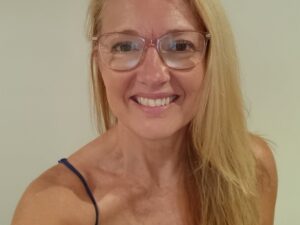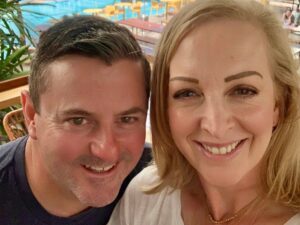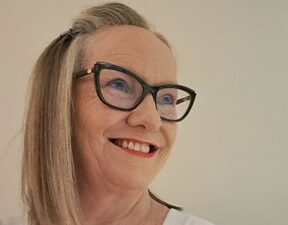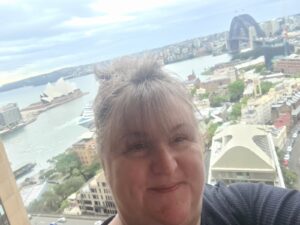Hi, my name is Ros and I live in Launceston, Tasmania, I am 59 years old.
I think my story is quite different to many here as I have been a support person for my son, and am now a patient myself, and my road to diagnosis was pretty smooth and uneventful.
Myself and my 2 sons were diagnosed with SDHB (Succinate Dehydrogenase B gene) in 2002 after my eldest son had a 10.5cm phaeo removed at just 12 years old. It was discovered in very dramatic circumstances when he was under anaesthetic for a bone graft in his arm (completely unrelated to his phaeo). He was tested for quite a few genetic disorders, and after testing positive for SDHB the rest of my family, including a large extended family, were tested. 75% of my (extended) family members tested are positive for SDHB, which is around 25 people. Anyway, the first part of our journey is my son’s story so I will move onto my own story.
Because of my SDHB diagnosis I have been closely monitored by an endocrinologist in Hobart for over 20 years, with yearly blood tests, and other kinds of testing that isn’t usually performed now. I was having MRIs every 3 years until a few years ago when I was lucky enough to be able to start having PET scans in Hobart; previous to that it meant a trip to Melbourne for PET scans. I had been having PET scans every 4 years and after my scan in September 2022 it was discovered that I have a paraganglioma in my neck – it had grown sometime in the 4 years between scans.
I was referred to a vascular surgeon, here in Tassie, as it was thought to be a carotid body tumour. After viewing my images he said that it wasn’t and referred me to an ENT specialist. The ENT said that it was out of his area of expertise and referred me to a neurotology surgeon. After a consultation with him it was decided that it would be too risky to remove because of where it is situated, on my vagus nerve which supplies information to almost every part of your body – so it’s known as a vagal paraganglioma. The neurotology surgeon was most concerned about the damage to my speech and swallowing ability though and advised that the recovery from surgery would be long and difficult. He contacted my endocrinologist with that information, and he (endocrinologist) then referred me to Peter Mac in Melbourne. The process from my initial diagnosis to this point took almost 7 months.
Once Peter Mac had my referral it moved along pretty quickly. I had a consult at Peter Mac with a Head and Neck Oncologist who ordered another MRI, which I had to go back to Melbourne for a few weeks later. He phoned a few days after the MRI to say that my paraganglioma had grown 2mm in those 7 months, so he referred me to their Neuro Oncology Team. We discussed the options and I decided to go ahead with SRT (stereotactic radiation therapy). I went back to Melbourne for the fitting of the radiation mask, and then a week and a half later I was back at Peter Mac for a week of SRT. I had 25 doses of radiation over 5 days, and it was quick and painless each time. I had very few after effects, just some localised pain and some fatigue. I will of course need continuous monitoring for the rest of my life.
I had 4 trips to Melbourne in 4 months, and although some of the cost is covered through PTAS, patients are still out of pocket by quite a bit, which can be difficult. My son has also had treatment and follow up care in Melbourne since his diagnosis 21 years ago, which has also significantly added to our financial burden.
I know that I am lucky that I was already seeing an endocrinologist so my road to diagnosis, and then care, was fairly smooth, but I know that there is a real need in Tasmania for more specialised care, especially for those who are newly diagnosed and need to navigate the health care system on their own – a NET Nurse would definitely go some way to fill that need and point patients in the right direction.
It has been a long and sometimes heartbreaking journey for my family, but I know that we are getting the best care available to us and feel very fortunate for that care.





